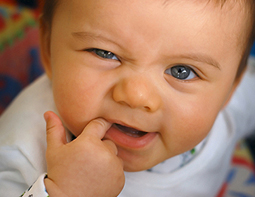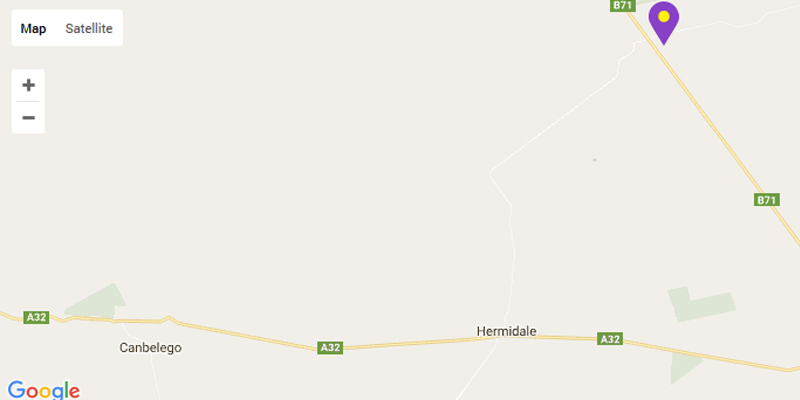Teething
A baby’s first tooth usually erupts at about six months of age; however, this can occur as early as birth or as late as your child’s first birthday with most children having a full set of teeth by their 2nd or 3rd birthday.
Many babies experience some discomfort during teething and are often irritable when new teeth break through their gums.

Baby Teething Symptoms
Some common signs of a teething baby can include:
- Frequent crying and crankiness
- A mild fever
- Reddened cheeks and drooling
- Loss of or reduced appetite
- Mild diarrhoea
- Sucking or gnawing on toys
- Pulling the ear on the same side as the erupting tooth
However, it’s important to remember teething should not cause severe illness. If your child has a fever or diarrhoea, see your doctor.
What is a teething rash?
Red, blotchy or chapped skin around your baby’s mouth is just one of the many signs a tooth may be making an appearance.1,2a
This teething rash is a common problem that can come and go as your baby’s teeth start to appear – and is usually more frequent in the few days just before and just after this happens.1
Why do babies get teething rash? The answer is saliva and dribbling! Teething can cause extra saliva and dribble soaked skin can become irritated and uncomfortable.2b,3
A teething rash can occur anywhere where your baby’s dribble stays in contact with their skin, including:2c
- Around their mouth
- Down their chin
- On their cheeks
- Or even on their neck and chest
You can help prevent teething rash by trying to keep your baby’s skin clean and dry, for example by:
- Gently wiping away the dribble from around their mouth and chin – but don’t over wipe or rub the skin as this can make things worse 2d,2e
- Applying a barrier cream or petroleum jelly to protect the skin2d – you can talk to your pharmacists or doctor about which type would best suit your baby
- Using a bib to catch the dribble2d
Relief for teething babies
The pressure on the gums from chewing something can sometimes provide temporary relief from the pain of teething, you could try:
-
- Refrigerating a teething ring (always follow the manufacturer’s instructions).
- Try rubbing your child’s gums gently with a clean finger.
- A dummy or pacifier may also help.
Paracetamol – such as Dymadon for babies – can help to temporarily relieve pain or fever associated with teething. Always read the label to ensure you give your child the right dose.
Ask for Dymadon paracetamol at your pharmacy.
ALWAYS READ THE LABEL. FOLLOW THE DIRECTIONS FOR USE. INCORRECT USE COULD BE HARMFUL. IF SYMPTOMS PERSIST, TALK TO YOUR HEALTH PROFESSIONAL.
References
- Macknin ML, et al. Symptoms associated with infant teething: a prospective study. Pediatrics. 2000;105(4 Pt 1):747-52. [ABSTRACT].
- Goodman E. What teething rash looks like and how to treat. 31 October 2020. Available at: https://www.medicalnewstoday.com/articles/teething-rash (accessed January 2023).
- Lyttle C, et al. Tooth eruption and teething in children. Pharm J. 2015;295:7883.
